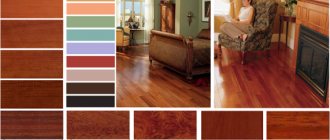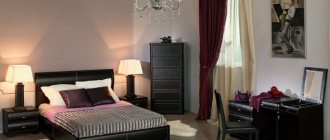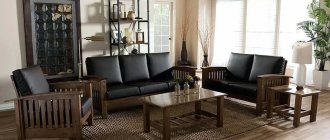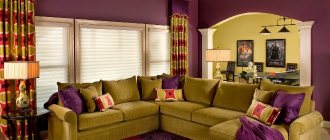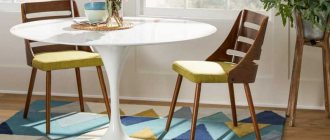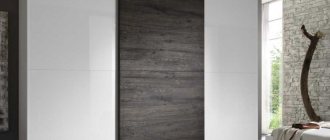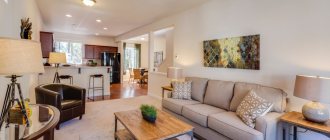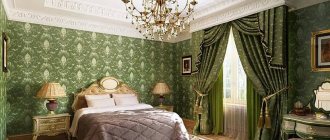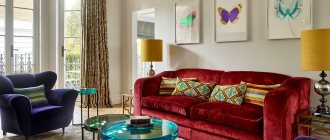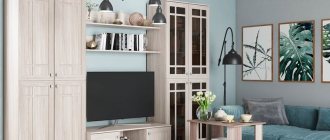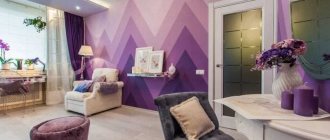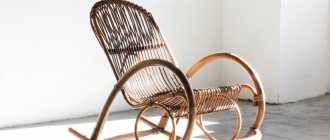Natural wood in the interior of a home is always expensive and prestigious. Especially when it comes to exotic woods such as wenge.
This is the name of tropical trees of the legume family, whose homeland is Central Africa. There are 25 known varieties of it. This name was coined by European colonists who discovered this breed at the end of the 19th century. The tree grows in countries such as Cameroon, Congo, and Ecuador. The height of the trees does not exceed 20 meters, the thickness of the trunk is no more than 1 meter. The completely smooth bark of the tree is poisonous; when cut, a milky sap of gray or pinkish-gray color is released. The tree family has a rich palette of brown shades. The range is from deep brown, almost black to dark burgundy and purple. Now this name has become a household name, not only the tree is called this way, but also a diverse palette of its shades.
The color of the wood is uneven: darker in the middle, lighter under the bark. Among the large variety, it is impossible to find two identical trees. Its shades depend on the composition of the soil where the tree grows, the age of the tree itself, the weather and neighboring plants. The high cost of wenge wood is ensured not only by its noble shades, but also by its high performance qualities:
- the wood is quite durable and resistant to mechanical damage;
- moisture resistant;
- is not susceptible to mold and is not afraid of parasites;
- durable and versatile;
- easy to process.
The high cost is compensated by a long service life. The use of this unique wood in the interior is always a sign of luxury and high status.
Features and influence of wenge color
The color of wenge can be defined as dark brown with black veins, but not everything is so simple. Like any other type of wood, there are variations. Sections are reddish, golden brown, with a slight greenish and purple tint, warmer or cooler.
It’s easier to first understand what wenge is in itself, and only then how to use it in the interior.
Wenge is a tropical tree native to Central Africa, which is a valuable species and grows up to 20 meters in height.
This is a rather rare species, so there is a real hunt for it - and in interiors such decoration is especially valued. The specificity lies in the characteristic cut: it is very decorative, and the veins resemble furrows from the claws of predators.
After cutting, the wenge cut quickly darkens, and the golden wood acquires that same dark chocolate hue. Moreover, the older the tree, the darker its tone.
The expressive texture is difficult to process and cannot be confused with other breeds. Therefore, it appears before designers in all its glory.
Natural wenge wood is heavy, massive, resistant to mold and parasites, and resistant to deformation and bending. But in modern interiors, imitation or laminate are more often used. And in this case, it is especially important to repeat the complex and multifaceted shade in detail.
What shades of wenge are there?
Unlike oak, which can be milky, bleached, rustic, clear, natural, antique, tobacco, the wenge shade usually does not have additional names and is designated in catalogs by one word. At the same time, from different manufacturers, the wenge color looks different:
- Melinge. Deep dark brown with cool undertones achieved through gray flecks.
- Tsavo. Warm chocolate shade.
- Aruba. A rich color scheme that fades into burgundy.
- Linum. The lightest tone with the finest veins.
- Magic. Neutral dark shade.
Take the choice of wenge color in the interior responsibly: the options for combinations with other tones depend on the saturation and temperature.
Combination of wenge color with other shades and textures
In the design concept of a living room, hallway, kitchen or bedroom, this decoration can look different. This color is too ambiguous, and what makes it so is the play of shades.
Combined with different palettes
- An excellent alternative to black, it will soften the contrast in the form of shades of chocolate and milk in a black and white apartment setting.
- Reddish furniture (wenge) in the living room interior goes well with warm colors, which will help “warm up” the room on the north side.
- The rich tones of veined African wood harmonize with the cold palette, perfectly highlighting blue, green and lilac tones. This color scheme is suitable for a bedroom on the south side of the house.
- The classic combination of noble chocolate texture will set off lemon, light beige, white or sandy walls and other surfaces.
Almost black wood is an aristocratic combination of wenge with other colors, including gray and white as a base. In such a setting of a kitchen or living room with a dining room function, small juicy accents would be appropriate, including bright greens, shades of juicy fruits and spicy spices.
No less luxuriously, the chocolate texture of expensive wood is combined with golden and yellow patterned surfaces.
For example, a combination of wenge wood in a bathroom design in the form of high-quality floor tiles and luxury imported sanitary ware.
One of the “expensive” proposals of designers is noble rosewood combined with shades of semi-precious stones. Turquoise or amethyst, sapphire or malachite, ruby or topaz is better to choose one, but it is good to use it in textiles and furniture upholstery.
Choose a white, milky or pearl gray background for the walls.
In all these combinations, the texture of the expensive material will look different. Much depends on the degree of reflection of light from the surface. For example, varnished floors and furniture, glossy tiles in the bathroom give a mirror reflection - a dark room looks much lighter.
A matte surface that absorbs light, on the contrary, usually looks darker in interiors, but is quite noble.
Elite leather upholstery and wenge-style furniture look no less interesting in the interior of a classic living room. Sofas and armchairs, dining sets and cabinet furniture for the hall made of wood (or with imitation texture) are a win-win option.
But the fabric should be just as expensive or even more luxurious:
- patterned tapestry made of colored weave threads on a natural basis;
- velvet or thick velor with iridescent fibers;
- plain jacquard, combining matte patterns and a glossy base;
- chenille with a noble combination of fluffy thread and smooth yarn;
- genuine leather or its high-quality imitation (eco leather, Alcantara).
There are no hard and fast rules regarding the choice of shades of woven upholstery. Much depends on the overall concept and design of wenge furniture in the design of a living room or bedroom. The main thing is that rosewood should be no more than one third of the overall color balance.
It is advisable to move everything dark closer to the bottom or place it only on one wall.
Demarcating a large room according to the “yin-yang” principle will help to effectively zone a space without walls. In a small apartment, it is better to limit yourself to small elements of a coffee-chocolate rosewood palette and light furnishings.
It is recommended to make window frames (laminated plastic), baseboards and interior doors from the same wood, as in the photo.
Advice. If you are impressed by the expensive decor of this wood, but its excess in the interior is depressing, do not place it in front of your eyes. For example, place chocolate shades at the head of the bed. This background looks interesting by a fireplace with marble cladding on the side wall of a relatively soft corner in the living room.
It is better to use textiles in this palette in doses, as a contrast. For example, two-color translucent curtains, where these tones are used in the form of narrow fragments, tiebacks or throws, as well as in the form of thread curtains.
It is recommended to combine wenge color with white, caramel and yellow tulle or curtains.
Sofa cushions can be used as bright accents in the living room or dining room against the background of chocolate furniture upholstery, sofa decks, covers or bedspreads in the following shades:
- ocher;
- pistachio;
- orange;
- wine red;
- green apple;
- mustard;
- mango color;
- raspberries;
- cream.
Wenge color in combination with other wood also has many winning options. This base goes well with light wood that has a pronounced texture.
the duet shade should be
- bleached oak;
- maple;
- nut;
- ash;
- cherry.
Advice. Modern household appliances look out of place in a classic interior. But it is advantageously “lost” in an office or living room against the backdrop of furniture the color of African rosewood.
In a children's room, it is advisable to use shades of this wood only as furniture finishing, in combination with light details and bright accents. A children's bed, wardrobe or wenge-style chairs are an excellent option for a classic style.
What colors does it go with?
Since wenge-colored furniture is almost black, this difficult shade works in much the same way. Wenge goes well with almost the entire color palette.
The first contender to pair with the wenge shade is white. Tones in contrast look bright, but restrained. Gray can be used as an additional light shade. True, in the case of melinge, the combination may become too faded - you will need to add bright accents.
Harmonizing duets are obtained by mixing wenge color with light, warm companions: beige, milky, sand. Most often, this combination is used when creating a classic interior with wenge, because is tested and working.
As for black, you shouldn’t overdo it: the maximum is to add small details to furniture in wenge color on a light background.
In the photo there is a combination with red
Don’t neglect the color scheme: wenge color in the interior looks equally good with pastel and bright colors. Cold melinge is usually combined with blue, blue, and green. Yellow, orange, and red suit warm colors. The complex aruba will sparkle in a new way next to purple.
What styles are wenge-colored furniture well suited for?
Wenge wood furniture is a sign of luxury, aristocracy and brutality. Unfortunately, the high price of the material makes it inaccessible to most Russians. Another option to fill your home with a piece of elegance is household items in the color of this wood.
An additional advantage of the choice is the fact that the shade can harmoniously “get along” with most modern styles.
- High-tech - straight lines, simple shapes, white and black, glass and metal. Only monochromatic, unobtrusive shades. The direction may seem to be one of the most ideal for using wenge color, both in relation to furniture and doors.
- Classical - assumes the presence of elements reminiscent of the era of the 17th century - the period of its formation. In it, wenge can be presented in the form of individual elements of furniture made according to samples of that period.
- Scandinavian – maximum white and gray shades. Most furniture also belongs to these color schemes, but the inclusion of individual elements is possible. For example, a wenge tabletop for a table with light legs, a dark kitchen work area or something like that.
But don't exaggerate, one brown object per room is enough.
- Loft is a style of spacious rooms with a minimum of decorative finishing. Place for wenge only in furniture.
- Contemporary - similar to Scandinavian, preference is given to light, beige shades. Wenge, with its chocolate tone, can only be present in furniture or decorative elements, and even then, in small quantities.
- Minimalism is, first of all, the most thoughtful space and well-organized area, and not a banal lack of furniture. There are no strict criteria for the use of color schemes.
But you need to choose one shade and add others as small accents.
- Neoclassicism - the beauty and sophistication of the classics with the addition of modern style. Preference is given to light colors. Place for wenge only in antique objects (frames, figurines, intricately curved chair legs), the number of which should be small.
- Eco-style - although it involves the use of wood and natural elements, light and pastel colors look preferable. Wenge is used extremely rarely and is considered a violation of style.
- Country is another option where the use of wenge is inappropriate. The main rule is to use a “natural palette” with a predominance of light wood and natural textiles.
- Modern style is a broad direction that does not require special rules. The main emphasis is on the play of contrasts, allowing the use of wenge with maximum “load”. One of the popular options is a light background with dark furniture.
Healthy! As can be seen from the presented review, there is a place for wenge everywhere, with the exception of country and eco-style. The only thing you need to pay attention to is the volume of its “presence” in a particular interior style.
Floor, doors, windows
Wenge color is used not only in furniture. It is good for floor coverings, creating a feeling of stability, confidence and security. In this case, it is desirable that the doors echo the floors at least with platbands.
Not every room can withstand the powerful pressure of dark color. And if you make the door leaves dark brown, it can significantly reduce the size of an already small room. There is an exit. It is enough to decorate only the extensions and platbands in a noble shade. And the doors in this case will be milky-creamy tones.
The same principle works for windows. In spacious living rooms and bedrooms you can install frames covered with high-quality imitation African wood. If the scope and concept of the project allows, then it is permissible to use dark window sills.
In rooms with a modest area, it is advisable to assign wenge the role of an accent and auxiliary shade.
At the same time, there should be an abundance of white and pastel colors around the noble color. In this case, you will achieve the desired result.
At the same time, there are cases when you need to create a subdued, intimate atmosphere. Billiard rooms, wine cellars, home cinemas, poker rooms - these are rooms in which an excess of dark chocolate color is appropriate. But even here it should receive an elegant frame in light colors. Instead of covering all the walls with wenge, alternate it with pearl gray, blue, pale pink, and turquoise. Give him coffee and tea shades as companions.
Wenge as a background
One of the most common ways to use wenge as a background color is as a floor finish. Laminate or floor tiles can harmoniously fit into any interior and add a little exoticism and luxury to it.
The only drawback of this choice is the above-mentioned difficulties from a functional point of view: a dark floor means noticeable dust, foot prints.
Another mistake of inexperienced designers designing their own apartment will be the problem of choosing furniture. Due to ignorance and fear of making mistakes, many people take furniture of a similar color. The resulting effect is called the “Wenge trap” in professional jargon.
Dark floors, furniture and, in most cases, poor lighting make the room dull, dull and depressing.
The positive effect of such combinations will be only in two cases, and their presence should be observed simultaneously:
- Good artificial lighting and large windows that let in a lot of light.
- Volumetric room.
Advice! For wenge floors, you should select furniture in warm, pastel shades.
The second option for using wenge color as a background color is a zoned finish. If it is not suitable for full wall cladding, then a part of the wall or a spacious brown niche looks great.
Peculiarities
This tone is used in decoration:
- finishing materials;
- furniture;
- entrance and interior doors and their cladding.
It is not even possible to imagine it as a faded shade of design, because it has a powerful energetic dominance.
When wenge predominates in the interior, it is characterized by a prestigious, laconic, strict atmosphere. It easily outshines light-colored interior items; in any case, it has a position of primacy, and this does not depend on the saturation of the shade.
Wenge as an accent
The emphasis on wenge color is most often done through the harmonious arrangement of furniture. In this case, it is not necessary to clutter the room with objects of this shade. 3 types of accent are allowed:
- Single – one element acts as an attention-grabbing element. This could be a decorative slide, upholstered furniture, or even a frame for family photos.
- Selective - in this case, there are 2-3 wenge-colored elements in the room. They can appear in a single ensemble (table, chairs) or be distributed in a chaotic manner, that is, intended for opposite functions (sofa and table, bedside table and door), the effect will be the same.
- Full accentuation is carried out while ensuring that all the furniture in the room is made in the same color and style. In this situation, an important nuance is to avoid interspersing other dark tones due to the likelihood of a color overabundance.
When choosing the main wall decoration, you need to rely on one of three design options:
- Creating a bright design occurs with the help of unusual accessories and a bright background of the walls.
- With a contrasting combination, you will further enhance the attention-grabbing furniture due to the bright color borders. This is achieved by combining dark and light tones.
- The bedroom can be decorated in a soft style. Pastel colors are used, preferably universal gray or beige.
Healthy! The neutral shade of wenge, close to black, allows it to blend harmoniously into most backgrounds. The main thing in this situation is to combine it with the style of the surrounding environment.
Choosing curtains
In order to place the final accents in a room with wenge furniture, it is important to make the right choice in favor of curtains.
In this case, the color of the fabrics must be selected exclusively to match the selected tone of the walls and purchased furniture.
If you manage to choose the right interesting combination of colors of furniture, textiles and walls, then in the end you will achieve a truly harmonious look in the room, and it will give its visitors comfort and joy every day.
Keep in mind that if you want the room to be filled with exceptional lightness and a feeling of happiness, then you need to choose curtains that are bright enough.
If you like wenge furniture, but today there is no possibility of purchasing it from natural wood, then do not be upset, as you can find a large number of different products made from veneer.
Main characteristics
Wenge also looks very stylish, which is why its distinctive pattern is so popular in today's interior design market. Its beautiful wavy pattern is similar to the color of the feathers of feathered partridges.
This effect is evident in both the main Wenge cuts and the partitions, where the contrast of the wood between the dark and medium brown grains shows up in higher contrast.
Material characteristics:
- Color/Appearance: The heartwood is medium brown, sometimes tinged with reddish or yellowish, with almost black stripes. When finishing (especially with oil) the wood can become almost black.
- Grain/Texture: The grain is straight, with a very coarse texture. Low natural shine.
- Granularity: diffusely porous, large and very large, but rare pores without a specific location. Sometimes there are dark brown inclusions; the middle rays, not visible without a lens, are at an average distance from each other.
- Durability and stability. Wenge is an extremely heavy, dense material. These characteristics give the material strength, which explains why Wenge is so popular for flooring and furniture. Wood stands the test of time.
- Laconic appearance. Has straight lumber to work with and greatly simplifies construction and design, making it easy to work with when it comes to appearance.
- Rot Resistance: Very durable, pest resistant.
- Labor intensive: difficult to process by hand or machine. Blurres the edges of the tool. Sanding occurs unevenly due to differences in density between light and dark areas.
Very splintery - care should be taken when handling unfinished wood with bare hands as splinters have an increased risk of infection.
Very large pores may be difficult to fill and are not suitable for applications where a perfectly smooth/even finish is required.
- Odor: Wenge has a weak, slightly bitter odor when working.
- Allergies/Toxicity: Although severe reactions are quite rare, inhalation of wood dust from this tree has been reported to cause a central nervous system reaction, abdominal cramps, skin irritation, eye irritation, and is a sensitizer.
In addition, splinters from it tend to take longer to heal and are also more likely to affect a larger area than splinters from other breeds.
- Pricing/Availability: Available in wide planks and veneer sheets. Prices are high and are likely to remain so as supplies dwindle.
- Sustainability: This timber species is not listed on the CITES appendix but is on the IUCN Red List. It is listed as threatened due to a decline of more than 50% over the last three generations, caused by the decline of its natural range and exploitation.
A wood with excellent strength and hardness properties and is also dark enough to be used as a substitute for ebony.
Common uses: veneer, paneling, furniture, clocks, figurines and other decor. As well as finishing materials, doors, door handles, musical instruments. Noble dark shades can not only emphasize the geometry of the room, but also bring luxury and nobility to the image of the interior.
Wenge has a visual impact on others due to its chocolate brown color. It also provides great contrast when designing spaces alongside lighter, more contrasting wood species.
What is wenge color and where does the name come from?
The name of the color comes from a species of tree native to west central Africa. The unique shade, varying between brown-gold and brown-black, makes its wood a valuable decorative material. The European name is wenge, but there are references to other names: Congolese or African rosewood, rosewood, dikela, bokonge, awong. In official documents it is called Millettia laurentii.
Wenge bedroom set in Art Nouveau style Source arredocarisma.ru
Interiors in wenge color - photo
Most often, wenge shades are used for various finishing details, flooring, veneer, and furniture sets. They go well with other types of wood - ash, oak, maple.
Wenge equally harmoniously complements luxurious classicism, fancy art nouveau and modern contemporary.
Wenge color in the living room
Luxurious wenge wood is a real find for large and spacious living rooms in a classic style. Darker tones go well with a neutral white or beige background, while lighter colors go well with rich burgundy, mustard or even raspberry.
Wenge parquet in the living room will delight friends and relatives, and will last for decades.
The dark and multifaceted shade is also good in modern minimalism. On a neutral white background, such furniture looks even more stylish, delicately balancing on the line between laconicism and pretentiousness.
A minimalist living room in wenge color does not even need additional accents and accessories - it is already completely self-sufficient.
Wenge color in the kitchen
If you love classic wooden kitchen sets with hinged doors and aged fittings, wenge is definitely your choice. An island layout or a kitchen with a separate bar counter looks especially impressive.
And a massive wenge-colored table will become a real star of the dining area during festive feasts.
In small kitchens, use minimalist, smooth wenge-style facades with the same laconic handles or without them at all. Combine dark contrasting inserts with a neutral light background. Use simple geometry and a minimum of decor - the multifaceted shade is beautiful in itself.
Wenge color in the bedroom
A bedroom in wenge color is not suitable for everyone, but it will certainly delight lovers of strict, restrained and laconic interiors. With such a shade and simple forms, you can interestingly play with oriental style, contemporary or neoclassical.
Warm peach, cream or salmon colors will help add a touch of romance.
To prevent the room from turning out too gloomy, we do not recommend decorating it completely under wenge. Dark furniture can be shaded with light laminate to match the light walls. And a cozy light bedside rug will help to visually lighten the expensive and sophisticated parquet.
Wenge color in the bathroom
Natural wenge wood is very durable and is not afraid of mold and mildew, so it can be used in the bathroom even in its original form. But floor tiles or glossy facades of the same shade look no worse.
Moreover, the combination of dark wood with white, beige or gray is that very fine line between classic and trendy modernity.
Wenge combines amazingly with snow-white sanitary ware and white stone countertops. Chrome or glass parts look no worse against this background. Pay attention to wenge doors - they not only look expensive, but will also last for years.
Wenge color in the hallway
In a large and spacious hallway, you can safely use wenge as the main color. This is a win-win business card of the house - the wood texture looks elegant and emphasizes the good taste of the owners.
You can even recreate the atmosphere of an ancient castle by carefully combining beams and beams with brickwork.
In a small hallway, wenge is a good contrast to a neutral light background, if you are tired of ordinary black for a long time. Elongated vertical lines will help to visually raise the ceilings and increase the space.
This can be either improvised decorative columns or simply elongated vertical furniture - hangers and pencil cases.
Wenge color in the children's room
Dark colors are rarely used in children's rooms, as they are too gloomy and depressing. But we hasten to assure you – this is definitely not about wenge! Of course, expensive classic sets, valuable parquet flooring or a huge four-poster bed are inappropriate.
But a high shelving unit, the sides of a crib or the side panels of a closet will become an expressive accent and help visually enlarge the room.
In the nursery, feel free to dilute wenge with bright and rich colored paints - orange, yellow, green. Such a room will be both fun and relaxed, but quite adult. It will easily “grow” with the baby - just gradually change parts and accessories.
Application options
The use of wenge shade is extensive: furniture is most often made in wenge color, but it is also used in the decoration of walls, floors, ceilings, in the manufacture of accessories and even textiles.
Wenge colored furniture
Wenge furniture in the interior is an indicator of status. Install in any room - living room, bedroom, kitchen, bathroom, nursery, hallway.
Coffee tables, walls, and cabinets are made for the hall. In a kitchen in wenge there can be either the entire set or part of it - the lower tier is made dark, the upper - colored or light. Or they are used exclusively in the dining area: in the form of a table with chairs or a sofa.
The photo shows a classic milky brown kitchen
The bedroom can be furnished in a shade from floor to ceiling (wardrobe, bed, nightstands), or it can be used to a limited extent as an accent. A freestanding chest of drawers, for example, will draw attention to the desired area.
Interior items can be either 100% dark or mixed: for example, wenge cabinets, facades - light oak or maple. The combination of white gloss and dark wood looks modern.
Decor and accessories
Decorative elements will emphasize good taste, but will not draw the attention of guests. These could be mirrors, small coffee tables, picture frames. Carved partitions or screens that zone the space look no less impressive.
Curtains and other textiles
Of course, calling the fabric wenge is not entirely correct: this concept means the dark brown color of the textile.
Curtains are good on their own, but they look best in combination with cream, milky, olive, gray, and blue shades. The same goes for pillows and blankets on the sofa - if they are all chocolate, the composition will turn out too bland.
Doors and windows
Wenge-colored doors are a universal option for various styles. In a classic style, for example, beautiful relief canvases with bas-reliefs would be appropriate. In modern - models with straight lines, clear shapes, in minimalism - dull.
Dark windows are an excellent alternative to regular white double-glazed windows. They look more expensive and go well with interior doors.
Ladder
Owners of country houses face a difficult choice: what to make a staircase from? Regular wood is not always suitable, but dark African wood is more versatile. It looks equally good in combination with carved balusters and glass railings.
Wenge color in the interior: gallery
Interior decor with wenge
You can add zest to an interior made using wenge color by bringing it closer to the place where the tree itself came from. For example, decorate a room with a painting depicting a sunny sandy beach or a savannah with a luxurious green crown of Congolese rosewood. You can complement all this with a beautiful figurine of African animals.
The effect of what is done will not leave you indifferent. The unique exotic African flavor will spread throughout the house and will warm you on cold winter evenings.
Plays of colors using wenge furniture Source stylingroom.ru
Advice! The most common way to fill the interior with decor using wenge is photo and painting frames.
Wenge and bleached oak: how to combine
The similarity between wenge and bleached oak lies in the similar structure of the wood fibers, which is why the shades can fit so harmoniously into each other. There are many combinations for combining them:
- Combined furniture: vertical walls – wenge, horizontal – bleached oak.
- Another one from the list of the most popular methods: kitchen set - wenge, floor covered with laminate - bleached oak.
- Using a similar principle, you can decorate the bathroom premises. The only drawback of a dark wood shade can be poor-quality water, leaving stains on its surface from dropped drops.
A bold decision Source twoidvor.com
Personal project of the customer Source: stylingroom.ru
Advice! Complement your kitchen interior, made from these combined wood species, with additional decoration. For example, original spotlights, figurines, and a tabletop vase.
Color Features
Wenge is called an African tree, the wood of which is famous for its high strength, sophisticated attractiveness, and original deep brown color. Due to these qualities, it is actively used for the manufacture of furniture for various purposes and sizes. Since this material is not very common, interior items made from it are quite expensive. Not all consumers can purchase such goods, but many want to do so.
For this reason, the modern furniture industry has offered customers an alternative to Wenge furniture, which does not have such a high price. And an alternative to this was furniture made from chipboard, MDF, plywood coated with Wenge veneer, which is distinguished by its deep color and high performance parameters.
Wenge wood veneer has high performance parameters: practicality, resistance to sunlight, high humidity, scratches, etc. Therefore, furniture sets with a similar coating are often purchased for residential premises: living rooms, bedrooms, children's rooms. They serve for a long time, do not lose their original attractiveness, and retain functionality. It is for these reasons that wenge furniture is so popular and in demand.
Interior styles
- Minimalism. It is based on simplicity and lightness, as well as the creation of light contrast, which wenge color does well with. Suitable even for small spaces.
- Scandinavian. It is characterized by the use of wood texture and dark tones. A wenge table, chest of drawers, and kitchen countertops will look good. A characteristic feature is the massiveness and slight roughness of the work.
- Ethnics. Moroccan, African, Egyptian styles are emphasized by the use of gold details and characteristic symbols, photographs, and decorative items. Wenge allows you to create a luxurious, palace interior.
- Country. Cozy, bright and practical American style, which is suitable for decorating a spacious home. Ceiling beams, fireplaces, sideboards, massive tables and cabinets will fit perfectly into this style. In addition, such furniture is strong and durable.
As for the modern loft and high-tech trends, they are characterized by chrome, glass surfaces, as well as straight lines and a lot of free space. Therefore, such expensive furniture with an unusual pattern and color is unlikely to be suitable. Baroque, classic, and empire style are combined with wood in any of its forms, and even in vintage it will become a real highlight.
Combination with other colors
Wenge is one of the specific colors for which it is quite difficult to choose the right palette. The combination should set off and, at the same time, emphasize the beauty of the wood. There are several optimal combinations.
Neutral solution
A universal option would be white color, which can both emphasize and calm at the same time. For wenge, such a tandem can be called ideal. The gray scale has approximately the same effect, but it may seem boring and slightly gloomy if you do not use interesting accents. Black color is used for special, luxurious interior solutions. In combination with wenge, it allows you to create real African ethnicity, but only in spacious rooms.
Warm idyll
Warm colors will be the optimal base for the chocolate shade of wenge. It will fill the room with warmth and sun, and will attract light if you add yellow, orange and red tones. Peach will add tenderness to the design.
Cold range
Wenge allows you to quickly reduce the overall temperature in the room and add coolness. Decor in turquoise and blue tones will help complement the overall concept. Gold, purple and lilac, as well as silver, emphasize the natural nobility of the palette.
